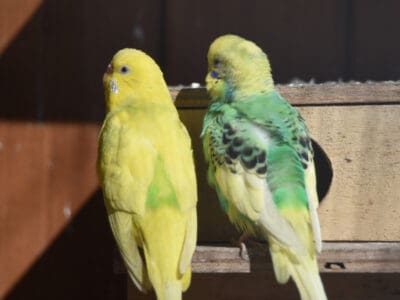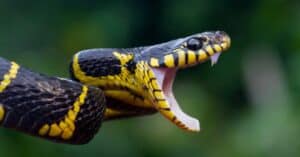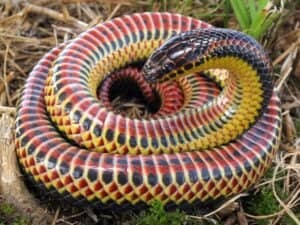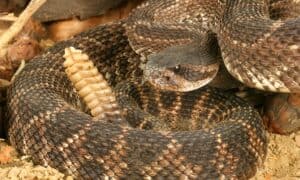Centipede vs Silverfish: What Are 8 Key Differences?
@media (min-width: 481px) {
.mobile-top-content {
display: none;
}
}
#mobileTopContentCTACarouselControls { overflow: hidden; text-overflow: ellipsis; white-space: nowrap; }
.mobile-top-content .more { color: #fff; }
.mobile-top-content a { color: #fff; text-decoration: underline; }
.mobile-top-content a:hover { color: #fff; text-decoration: underline; }
@media (max-width: 480px) {
.mobile-top-content {
background-color: #06a10b;
color: #fff;
text-align: center;
/*height: 60px;
padding-top:5px;*/
font-size:80%;
/* display: block; */
margin: 0px -30px;
}
}
Has your home been invaded by an unwelcome pest? A house centipede or a silverfish, which one is it? Many distinct differences may be found between these two tiny creatures, even though they both have long antennae and elongated bodies. This article will discuss 8 important distinctions between these two creepy little crawlers!
Centipede vs Silverfish: A Comparison

A-Z-Animals.com
| Centipede | Silverfish | |
|---|---|---|
| Size | 0.4 – 12 inches | 0.5 – 1.0 inch |
| Colors | Yellow-Brown, Dark Banded Legs | Light Grayish-Blue, Silvery Scales |
| Physical Features | Long Bodies, 30 Legs | Scaly, Fish-Like Body, 3 Appendages |
| Danger | Dangerous to small insect | Books, Food, Clothing |
| Diet | Insectivorous | Paper, Fabric, Pet Foods, Grains |
| Lifespan | 5 – 6 Years | 3 Years |
| Indoor / Outdoor | Mostly Outdoors: Firewood, Warm, Wet Places, Sinks / Toilets | Both: Wet/Dark Places, Kitchens, Bathrooms, Basements |
| Infestation | Less Likely in Home, Can Get Rid of Smaller Pests | More Likely in Home, Keep Dark Areas Clean and Dry |
Key Differences between Centipede vs Silverfish
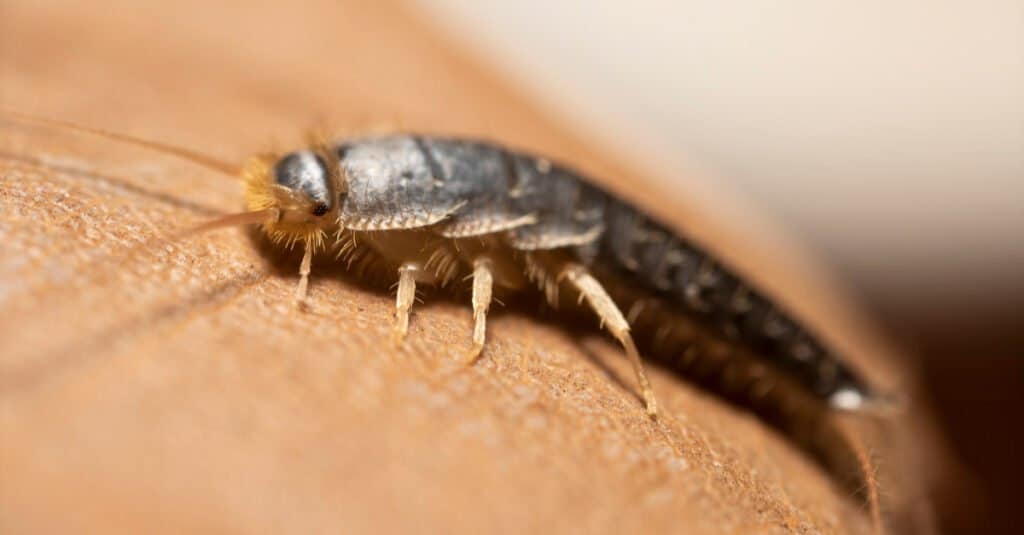
Panto.unno/Shutterstock.com
The key differences between a centipede and a silverfish are their appearance, size, diet, lifespan, and physical characteristics.
Both centipedes and silverfish move remarkably quickly for creatures of their sizes. However, unlike the centipede, the silverfish is a true insect with six legs. Centipedes are arthropods that are closely related to insects, but they are not insects themselves. You’ll be able to tell the two apart once you take note of the significant differences. Here are a few more differences between the two species.
Centipede vs Silverfish: Size
Size-wise, silverfish are between the lengths of 0.5 and 1 inches. The largest of centipedes can grow up to 12 inches (30 centimeters) in length, and the smallest centipedes are just 0.4 inches (1 centimeter) long.
Centipede vs Silverfish: Colors
House centipedes are typically yellow-brown in color, with dark bands running along their legs. Silverfish has a gray-silver tone. It can be deep brown at times but will always be darker than a centipede.
Centipede vs Silverfish: Physical Features
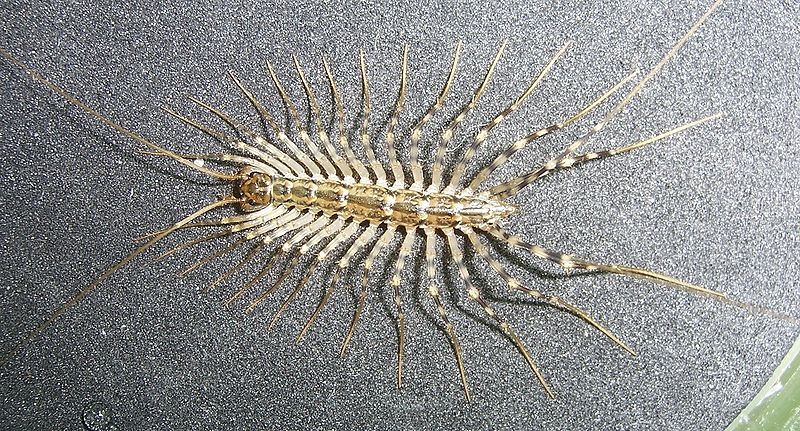
Dilcoe – Public Domain
One of the easiest ways to tell the difference between a silverfish and a house centipede is by looking at the number of legs. House centipedes have way more legs than silverfish, typically around 30 legs.
Silverfish is smaller than an adult centipede, and each of its six legs is quite short. Silverfish have two long antennae that protrude from the top of their heads and three leg-like appendages that protrude from their belly. These appendages are actually sensory apparatuses.
Centipede vs Silverfish: Danger
Silverfish consume both starchy and high-protein meals. They are especially active at night and have been known to destroy books, food, and clothing. Silverfish do not pose a threat to human health and do not transmit disease.
Centipedes are venomous crawlers that bite. Centipedes that bite their prey use venom to inject toxins into them. These compounds cause harm to little insects but pose no danger to people. They are not harmful to persons, food, clothing, furniture, or other household objects. They are found in wet, decomposing leaf litter and other organic debris and only eat other insects.
Centipede vs Silverfish: Diet

2Dvisualize/Shutterstock.com
At the very least, your food is safe from house centipedes. They are insectivorous. Surprisingly, house centipedes consume silverfish. The most common household pests include roaches, moths, flies, silverfish, and termites, all of which are eaten by house centipedes. Therefore, centipedes in the house can also signal the presence of other insects. Centipedes are thus a kind of pest management.
Silverfish love to feed on carbs and sweets. Additionally, they will consume paper, food crumbs, and other natural fibers. Silverfish feed on starches and protein-rich foods such as grains, vegetables, fibers, sugars, and textiles. Additionally, the bugs consume preserved cereals and pet food.
Centipede vs Silverfish: Lifespan
Silverfish can live for up to 3 years. The common house centipede is one of several species of centipede that can live for 5 or 6 years. For arthropods, this is a long lifespan.
Centipede vs Silverfish: Indoor / Outdoor
Despite their preference for outdoor living, silverfish are frequently found in residences. Silverfish may thrive in basements, bathrooms, laundry rooms, and kitchens. They’re drawn to confined spaces, dark spaces such as those found between the stove and the kitchen drawers.
Most centipede species, even the common “house” centipedes, prefer to live outside. However, they are also drawn to warm, wet areas. Therefore, it is possible for them to get into your pipes, under the toilet, behind the sink, or in any other wet area of the house.
Centipede vs Silverfish: Infestation
Silverfish infestations aren’t helpful in any manner. Unless you enjoy having your food, clothes, and books eaten. Denying them food and dark, wet hiding places is enough to keep them at bay, but not completely.
Since house centipedes rarely reproduce, you don’t need to go spraying the pest spray. They won’t be many, and you might miss them. The true benefit is that they can eat other pests in your home. House centipedes are nature’s bug exterminator and will quickly eliminate pests.
Wrapping Up Centipede vs Silverfish
Upon further investigation, there are many noticeable differences between these two. First, the silverfish is an insect, and the centipede is an arthropod. Also, house centipedes are grayish-yellow, while silverfish are gray or silver. House centipedes have dark longitudinal stripes and bands on their legs, whereas silverfish are uniformly colored. Sadly, silverfish are a notoriously tough nuisance to eradicate. If you suspect you have silverfish in your home, call an exterminator.
More from A-Z Animals
.more-snake-card-image { max-height:140px !important; }
@media (min-width: 481px) {
.mobile-top-content {
display: none;
}
}
#mobileTopContentCTACarouselControls { overflow: hidden; text-overflow: ellipsis; white-space: nowrap; }
.mobile-top-content .more { color: #fff; }
.mobile-top-content a { color: #fff; text-decoration: underline; }
.mobile-top-content a:hover { color: #fff; text-decoration: underline; }
@media (max-width: 480px) {
.mobile-top-content {
background-color: #06a10b;
color: #fff;
text-align: center;
/*height: 60px;
padding-top:5px;*/
font-size:80%;
/* display: block; */
margin: 0px -30px;
}
}
Has your home been invaded by an unwelcome pest? A house centipede or a silverfish, which one is it? Many distinct differences may be found between these two tiny creatures, even though they both have long antennae and elongated bodies. This article will discuss 8 important distinctions between these two creepy little crawlers!
Centipede vs Silverfish: A Comparison

A-Z-Animals.com
| Centipede | Silverfish | |
|---|---|---|
| Size | 0.4 – 12 inches | 0.5 – 1.0 inch |
| Colors | Yellow-Brown, Dark Banded Legs | Light Grayish-Blue, Silvery Scales |
| Physical Features | Long Bodies, 30 Legs | Scaly, Fish-Like Body, 3 Appendages |
| Danger | Dangerous to small insect | Books, Food, Clothing |
| Diet | Insectivorous | Paper, Fabric, Pet Foods, Grains |
| Lifespan | 5 – 6 Years | 3 Years |
| Indoor / Outdoor | Mostly Outdoors: Firewood, Warm, Wet Places, Sinks / Toilets | Both: Wet/Dark Places, Kitchens, Bathrooms, Basements |
| Infestation | Less Likely in Home, Can Get Rid of Smaller Pests | More Likely in Home, Keep Dark Areas Clean and Dry |
Key Differences between Centipede vs Silverfish

Panto.unno/Shutterstock.com
The key differences between a centipede and a silverfish are their appearance, size, diet, lifespan, and physical characteristics.
Both centipedes and silverfish move remarkably quickly for creatures of their sizes. However, unlike the centipede, the silverfish is a true insect with six legs. Centipedes are arthropods that are closely related to insects, but they are not insects themselves. You’ll be able to tell the two apart once you take note of the significant differences. Here are a few more differences between the two species.
Centipede vs Silverfish: Size
Size-wise, silverfish are between the lengths of 0.5 and 1 inches. The largest of centipedes can grow up to 12 inches (30 centimeters) in length, and the smallest centipedes are just 0.4 inches (1 centimeter) long.
Centipede vs Silverfish: Colors
House centipedes are typically yellow-brown in color, with dark bands running along their legs. Silverfish has a gray-silver tone. It can be deep brown at times but will always be darker than a centipede.
Centipede vs Silverfish: Physical Features

Dilcoe – Public Domain
One of the easiest ways to tell the difference between a silverfish and a house centipede is by looking at the number of legs. House centipedes have way more legs than silverfish, typically around 30 legs.
Silverfish is smaller than an adult centipede, and each of its six legs is quite short. Silverfish have two long antennae that protrude from the top of their heads and three leg-like appendages that protrude from their belly. These appendages are actually sensory apparatuses.
Centipede vs Silverfish: Danger
Silverfish consume both starchy and high-protein meals. They are especially active at night and have been known to destroy books, food, and clothing. Silverfish do not pose a threat to human health and do not transmit disease.
Centipedes are venomous crawlers that bite. Centipedes that bite their prey use venom to inject toxins into them. These compounds cause harm to little insects but pose no danger to people. They are not harmful to persons, food, clothing, furniture, or other household objects. They are found in wet, decomposing leaf litter and other organic debris and only eat other insects.
Centipede vs Silverfish: Diet

2Dvisualize/Shutterstock.com
At the very least, your food is safe from house centipedes. They are insectivorous. Surprisingly, house centipedes consume silverfish. The most common household pests include roaches, moths, flies, silverfish, and termites, all of which are eaten by house centipedes. Therefore, centipedes in the house can also signal the presence of other insects. Centipedes are thus a kind of pest management.
Silverfish love to feed on carbs and sweets. Additionally, they will consume paper, food crumbs, and other natural fibers. Silverfish feed on starches and protein-rich foods such as grains, vegetables, fibers, sugars, and textiles. Additionally, the bugs consume preserved cereals and pet food.
Centipede vs Silverfish: Lifespan
Silverfish can live for up to 3 years. The common house centipede is one of several species of centipede that can live for 5 or 6 years. For arthropods, this is a long lifespan.
Centipede vs Silverfish: Indoor / Outdoor
Despite their preference for outdoor living, silverfish are frequently found in residences. Silverfish may thrive in basements, bathrooms, laundry rooms, and kitchens. They’re drawn to confined spaces, dark spaces such as those found between the stove and the kitchen drawers.
Most centipede species, even the common “house” centipedes, prefer to live outside. However, they are also drawn to warm, wet areas. Therefore, it is possible for them to get into your pipes, under the toilet, behind the sink, or in any other wet area of the house.
Centipede vs Silverfish: Infestation
Silverfish infestations aren’t helpful in any manner. Unless you enjoy having your food, clothes, and books eaten. Denying them food and dark, wet hiding places is enough to keep them at bay, but not completely.
Since house centipedes rarely reproduce, you don’t need to go spraying the pest spray. They won’t be many, and you might miss them. The true benefit is that they can eat other pests in your home. House centipedes are nature’s bug exterminator and will quickly eliminate pests.
Wrapping Up Centipede vs Silverfish
Upon further investigation, there are many noticeable differences between these two. First, the silverfish is an insect, and the centipede is an arthropod. Also, house centipedes are grayish-yellow, while silverfish are gray or silver. House centipedes have dark longitudinal stripes and bands on their legs, whereas silverfish are uniformly colored. Sadly, silverfish are a notoriously tough nuisance to eradicate. If you suspect you have silverfish in your home, call an exterminator.



